Top 10 Places To Travel In Morocco
Morocco is modern Muslim country in North Africa. It has a coast on the Atlantic Ocean that reaches past the Strait of Gibraltar into the Mediterranean Sea. Morocco, also referred to as the Kingdom of Morocco, has international borders with Algeria to the east, Spain to the north (a water border through the Strait and land borders with two small Spanish cities, Ceuta and Melilla), and Mauritania to the south. For Westerners, Morocco holds an immediate and enduring fascination. Since it’s not possible to see everything on the first or even second trip we’ve selected The Top 10 Places To Travel To in Morocco will give you a taste of the country’s highlights: outstanding natural wonders, spectacular cities, history, culture and breathtaking architecture.
Djemma el Fna Square

Beneath the foothills of the Atlas Mountains in the city center of Marrakesh lies Djemma el Fna, a famous UNESCO recognized city square, where you will discover a world of mysterious bazaars and a set amidst the ancient city walls of Marrakesh’s medina. Djemma el Fna is a unique L- shaped square best described as a labyrinth of mazes. There are souks sprawling off the sides of crowed alleys that sell carpets, spices, metal and wood works and tourist trinkets. Marrakesh has been built around Djemma el Fna and is often referred to as the heart of Marrakesh. In the evening, snake charmers, fortune tellers, monkeys & musicians transform this city Center into a medieval circus.
Ergg Chebbi Dunes, The Moroccan Sahara
Moroccan legend says that the Erg Chebbi sand dunes were sent by God as a punishment for turning away a weary traveler from the desert. Moroccans believe that the dunes piled up outside Merzouga to teach them a lesson so that they would never refuse to help tired travelers ever again. The Erg Chebbi dunes at Merzouga are indisputably one of the greatest sights of Morocco. These giant hills of smooth sand line the Algerian border and are a must see for everyone.Today, arriving to the Erg Chebbi dunes of Merzouga is a breeze in comparison to decades prior; there are many options to take you there. The easiest way is by 4×4 land cruiser however for those who have time to explore the Sahara, camel trekking is also popular. The best way to travel is with a guide. If you choose to do so, you will be in expert hands and have the opportunity to cruise the dunes and areas surrounding them. When trekking by camel, you must allow a minimum of two weeks.
Cascades d’Ouzoud Waterfalls
In the Middle Atlas, just hours away from the Imperial city of Marrakech, lies one of the most majestic waterfalls set among a Berber village within Morocco. Morocco’s famous waterfalls, Cascades d’Ouzoud are argued be the most photographic falls within this geographically lush green region.

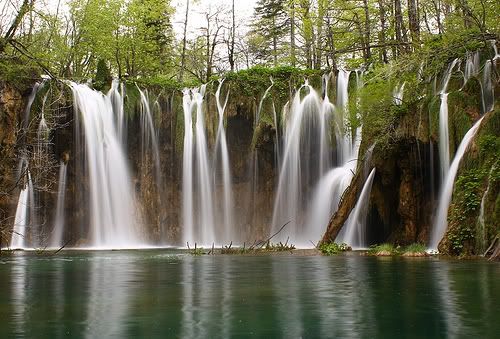
 The falls are so beautiful that even a novice photographer can capture their essence. When it comes to the cascades, a picture is truly worth a thousand words and the falls appear at least as stunning in real life as in print. To experience the intrinsic beauty of Cascade d’Ouzoud you have to pass through the tiny Berber village of Ouzoud. The village is located eighteen kilometers from Marrakesh-Azilal road. Most travelers arrive by private 4×4 directly if on a tour. Another way to get to the falls is by shared taxi from Marrakech to Azilal and then transfer to another shared taxi to reach them. Other alternatives include renting a car for the day in Marrakesh or Beni Mellal. From Beni Mellal you can also take a bus to Azilal. The best time to capture the Cascades d’Ouzoud waterfalls is between mid to late afternoon. Often rainbows appear, making the waterfalls even more remarkable and providing photographers with magazine quality photos. To capture the widest rainbows head towards the bottom of the falls.
The falls are so beautiful that even a novice photographer can capture their essence. When it comes to the cascades, a picture is truly worth a thousand words and the falls appear at least as stunning in real life as in print. To experience the intrinsic beauty of Cascade d’Ouzoud you have to pass through the tiny Berber village of Ouzoud. The village is located eighteen kilometers from Marrakesh-Azilal road. Most travelers arrive by private 4×4 directly if on a tour. Another way to get to the falls is by shared taxi from Marrakech to Azilal and then transfer to another shared taxi to reach them. Other alternatives include renting a car for the day in Marrakesh or Beni Mellal. From Beni Mellal you can also take a bus to Azilal. The best time to capture the Cascades d’Ouzoud waterfalls is between mid to late afternoon. Often rainbows appear, making the waterfalls even more remarkable and providing photographers with magazine quality photos. To capture the widest rainbows head towards the bottom of the falls.The Majorelle Garden
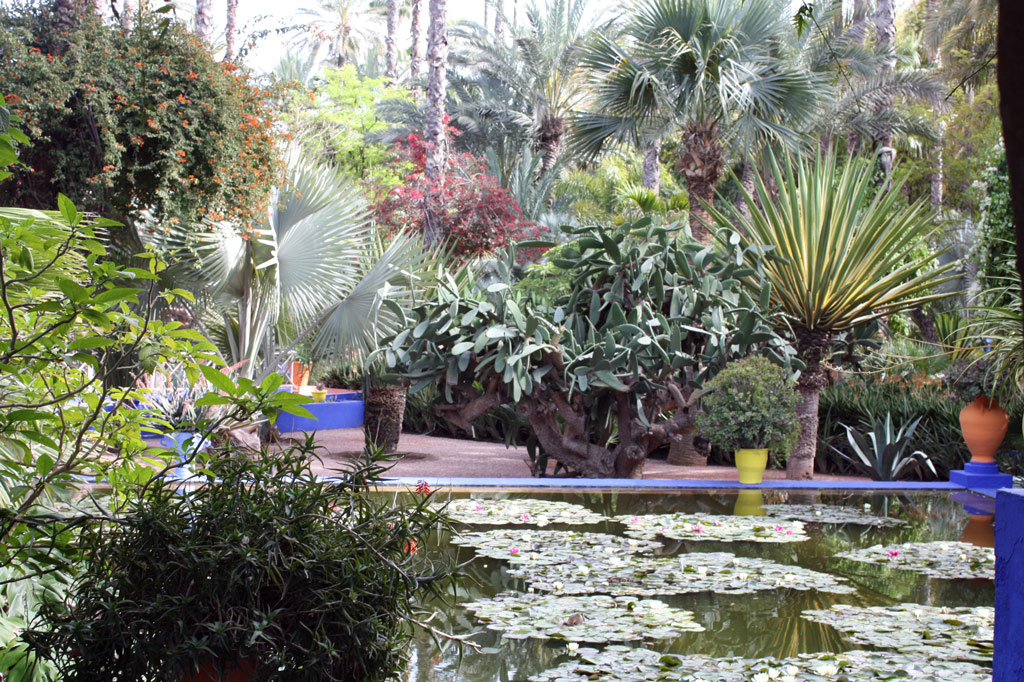
,Marrakech,Morocco.jpg)
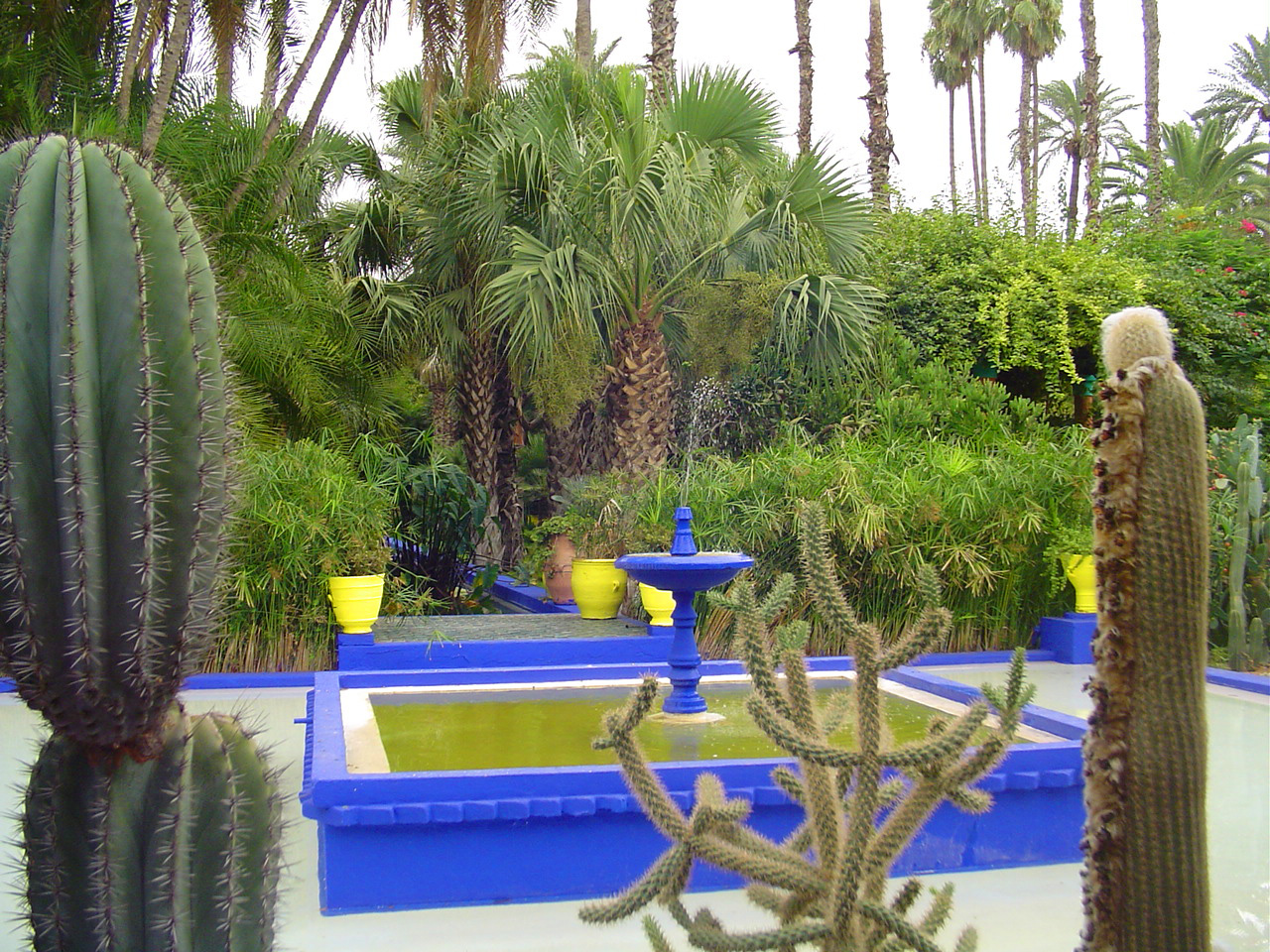
The subtropical Majorelle Garden is located in the heart of Gueliz, Hivernage within the Imperial city of Marrakesh. It is one of the most delightful and stunning spots within this red walled city. To arrive at this meticulously designed botanical garden you must pass through Marrakesh’s medina filled with acres of olive groves and palms. The Majorelle Garden (Jardin Majorelle) previously the Jardin Bou Saf, was designed by the French expatriate artist Jacques Majorelle in 1924. Jacques Majorelle was the son of the celebrated Art Nouveau furniture designer Louis Majorelle. He studied at the École des Beaux-Arts in Nancy in 1901 and later in 1919 he went to Marrakesh, Morocco to recover from heart problems. He built the garden during those years using special colour of blue which he used extensively in the garden that is named after him, Majorelle Blue. Jacques Majorelle returned to France in 1962 after a car incident and died later that year of complications from his injuries. Even though Morocco is no longer under the French protectorate, this originally French creation is one of the most beloved areas in Morocco.
Although the Majorelle Garden has existed in Morocco for decades, it was only made famous abroad when the Majorelle Garden’s former owner and care-taker, fashion designer Yves Saint Laurent, featured it in the 1997 Chelsea Flower Show in London. Since this time, many have journeyed to Morocco just to see the Majorelle Garden.
The Todra Gorge
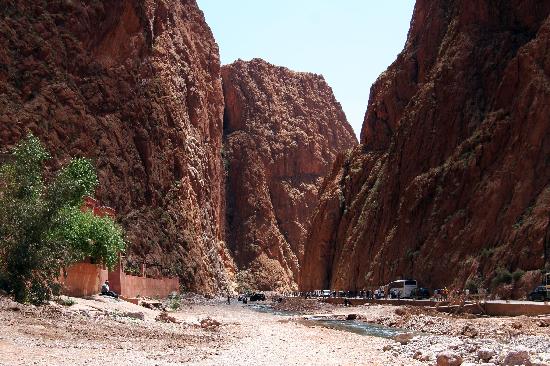


The Todra Gorge is a trench of gigantic rock walls that, change color and run through the High Atlas Mountains creating an absolutely magnificent spectacle. Many travelers visit the Todra Gorge as they journey through the south on the ‘Road of One Thousand Kasbahs’, a route from Ouarzazate to Erfoud where these century old pisé fortifications remain. The mining town of Tinerhir is the base town for visiting the Todra Gorge. The Gorge is breathtaking and easy hike by foot with many places to stop to photograph along its well-maintained dirt road. Part of the spectacular scenery includes an opportunity to see how the local Berbers live as nomads; as they stroll through the gorges many winding roads hering their donkeys and camels.
Volubilis, Walili – Roman Ruins

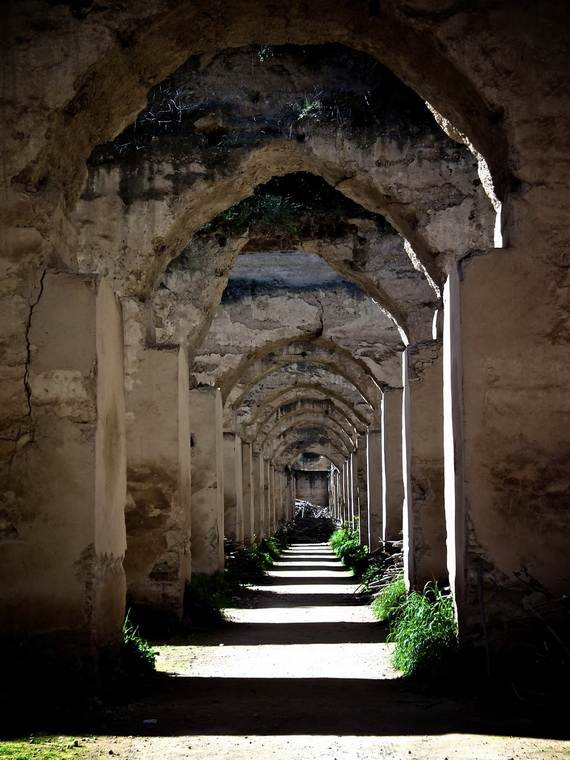

There is no better proof that the Romans once occupied Morocco than the dramatic and breathtaking archaeological site of Volubilis (Arabic, Walili) located thirty-three kilometers from Meknes in the Middle Atlas. The nearest town is Moulay Idriss, named after the great grandson of the Prophet Muhammad. The site, which has been recognized by UNESCO since 1997, became famous abroad when Martin Scorsese made it a feature location for his film, The Last Temptation of Christ.
Volubilis is best described as a colony where Roman culture was made central to its inhabitants. Originally, the site was a Carthaginian settlement since the third century B.C.; however, the Roman Empire transformed the city into one of its administrative centers. The Romans transformed Volubilis into a typical city complete with mansions to house the Roman officials, a town center, a triumphal arc and temples devoted to the Roman gods. Christianity was the practiced religion and Latin was the spoken language by the Greeks, Jews and Syrians living in Volubilis.
The Koutoubia Mosque


The Koutoubia Mosque, located in Marrakesh’s Djemaa el Fna Square, is a landmark and the largest mosque in Marrakesh, Morocco. The meaning of the word ‘mosque’ is the place where one bows down in a prayer. Consequentially, a mosque is center of religious life in Islam. Built during the Hispano-Moresque period, characteristic of simple yet masterful craftsmanship and luxury, The Koutoubia Mosque is argued to be most beautiful and proportioned mosque in the world. The Koutoubia Mosque was completed under the reign of the Almohad dynasty Caliph Yaqub al-Mansur (1184-1199) and was used as model for the Giralda of Seville then for the Hassan Tower of Rabat. The name is derived from the Arabic al-Koutoubiyyin for librarian, since it used to be surrounded by sellers of manuscripts. Koutoubia Mosque, is often referred to in literature as the “bookseller’s mosque” and was named after the souk of koutoubiyyin, where sellers of manuscripts in the twelfth and thirteenth centuries laid out books and scripts on stalls on front of the original mosque.
Aït Benhaddou Kasbah



Recognized as a UNESCO site, the Ksar Aït Benhaddou is one of the most beautiful in Morocco. This giant fortification, which is made up of six kasbahs and nearly fifty ksours (individual kasbahs), is a great example of pisé clay architecture. Aït Benhaddou sits amidst a valley near the foothills of the Atlas Mountains, just thirty-two miles from Ouarzazate, the film capital of Morocco. Ouarzazate first came into the international spotlight with the Hollywood film Lawrence of Arabia; Aït Benhaddou made a feature appearance in this film. Orson Welles used it as a location for Sodome and Gomorrah; and for Jesus of Nazareth the whole lower part of the village was rebuilt. Since then many famous directors have followed in his footsteps to exploit the magnificent scenery of Ouarzazate. International blockbusters shot there in recent years include: the French version of Cleopatra, Bertolucci’s Sheltering Sky, Scorsese’s Kundun, Gillies MacKannon’s Hideous Kinky, Ridley Scott’s Gladiator, Black Hawke Down, Oliver Stone’s Alexander The Great, Ridley Scott’s Kingdom of Heaven, and Penelope Cruz’s Sahara.
Kasbah Taouirt ..Kasbah Taourirt


Nearby Ouarzazate, a small town at the crossroads of the Drâa, Dadés and Ziz valleys, stands Kasbah Taourirt. Kasbah Taourirt is one of the most impressive of its kind in Morocco. The town of Ouarzazate was made famous when the Hollywood film, Lawrence of Arabia, was filmed nearby at the ancient Berber village of Aït Benhaddou. This helped raise awareness for Kasbah Taourirt, a magnificent structure, built by the Glaoui. At one point in the 1930’s, Kasbah Taourirt was considered the largest Kasbah in Morocco and today is classified as a historical monument giving tribute to the Glaoui
The Dar Batha Museum of Fes
The Batha Museum of Fes was originally a palace built in a Hispanic-Moorish design by Moulay Hassan at the end of the 19th century. The palace belonged to the two Sultans Hassan I and Moulay Abdelaziz. In 1915 Dar Batha Palace took on the role of providing a home to Moroccan arts and was reinvented as the Dar Batha Museum If you have an appreciation for art, craft and history, the Dar Batha Museum in Morocco is a must-see attraction. The Dar Batha Museum boasts some of Morocco’s most exquisite collections of antiques, astrolabes, aleju (Fes gold thread), traditional Fassie art works such as embroideries, zellige, sculpted works, jewelry, iron works, Korans, carpets and ceramics.











